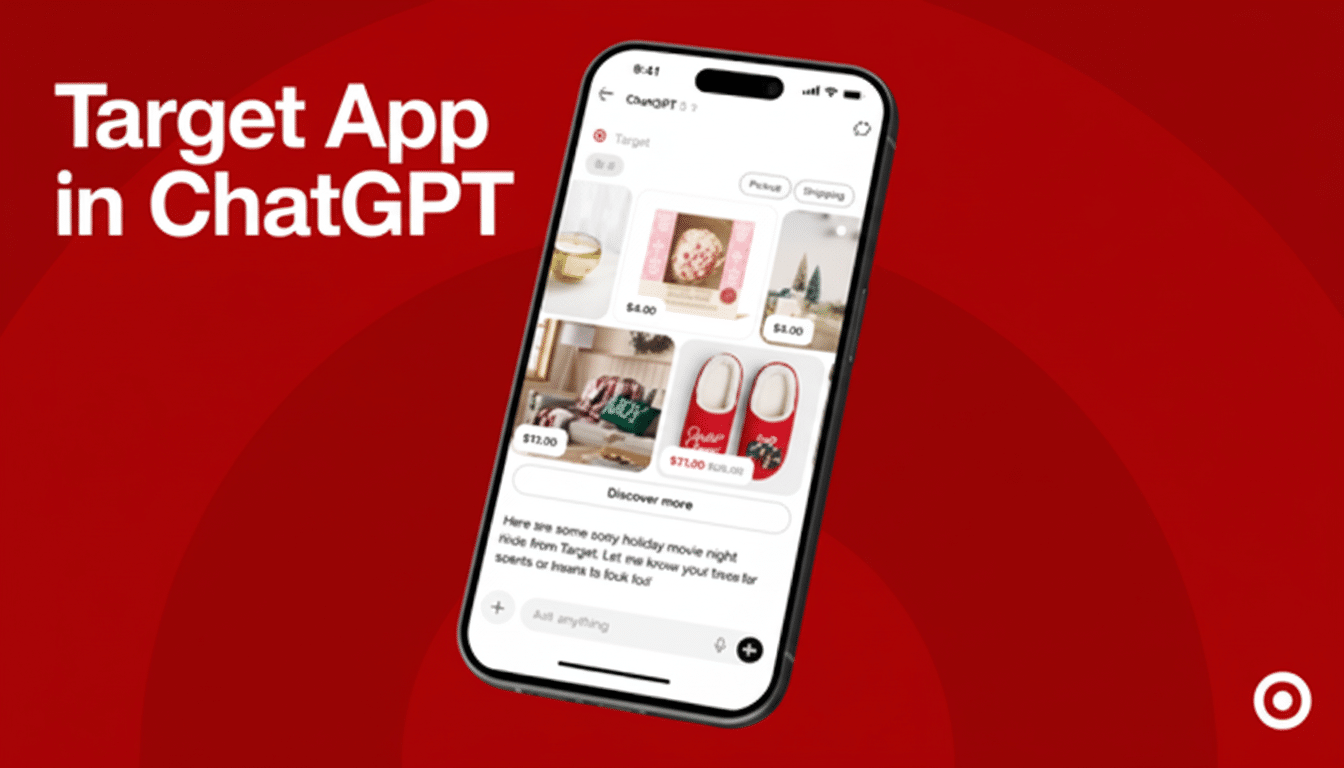Adding shopping to ChatGPT, Target joins a growing list of consumer brands creating apps on OpenAI’s platform. The beta, which launches next week, will allow guests to browse for products, collect an order of more than one item, shop groceries and check out — all without exiting the chat.
The move whisks one of America’s largest retailers straight into everyday AI discussions, the channel OpenAI has been actively courting with brand-built apps and new commerce features that collapse search, selection and purchase into a single thread.

What the Target ChatGPT App Does for Shoppers
OpenAI says Target’s system will manage brainstorming for ideas and guided shopping, from “gifts for a new parent under $50” or “ingredients for a weeknight taco night,” then translate the prompts into shoppable, multi-item carts. The app will also feature food and household essentials, indicating a move away from inspiration toward repeatable, use-case-driven utility.
The checkout takes place within ChatGPT on OpenAI’s nascent commerce stack, which includes Instant Checkout, a feature that aims to complete purchases directly within chat. OpenAI has been testing similar features with retailers and marketplaces integrated into ecosystems like Etsy and Shopify, signaling a world where basket building, payment facilities and post-purchase support all take place from within the same interface.
Although Target has not provided specifics on loyalty features, tying chat-assisted shopping to Target Circle and fulfillment options is the obvious next step — including in Drive Up park-and-deliver and same-day delivery via Shipt. However, when your conversational cart also translates to real-time inventory, store-level availability and pickup windows, the value of a digital conversation-driven purchase goes through the roof.
Deeper Enterprise Tie-Up Across Teams and Systems
The consumer-facing app is part of a larger commitment at the enterprise level: Target will make ChatGPT Enterprise available to its approximately 18,000 headquarters employees. The company plans to plug OpenAI models into supply chain forecasting tools, store operations software and employee support and customer service policies.
In practice, that could mean AI-assisted copilots to produce demand plans from historical sales and local events, triage store tasks, develop product content or drive personalized gift finders in digital experiences. Retailers have long pursued these benefits with traditional machine learning, but generative systems can also bring dynamic reasoning and natural-language interfaces that reduce workflows from hours to minutes.
Consulting firms such as McKinsey have estimated that generative AI has potential to unlock significant value in retail and consumer goods by raising labor productivity, enhancing merchandising decisions and reducing out-of-stocks. And as Target stacks these models across guest and team member touchpoints, the speed of the feedback loop between operations and experience could become an enduring competitive edge.
OpenAI’s Retail Push Builds on Momentum With Brands
Target’s introduction comes on the heels of a regular drumbeat of consumer-facing apps that have been introduced inside ChatGPT from brands as varied as Expedia, Spotify, Canva, Coursera, Figma and Zillow. The throughline is simple: embed discovery and transaction at the places where consumers already ask questions, and use AI to do the orchestration.

The approach comes as conversational commerce is heating up throughout the industry. Amazon has launched its AI-powered shopping assistants within its own ecosystem, Google is experimenting with richer AI shopping experiences on search, and Shopify is launching generative copilots for merchants. By meeting shoppers in chat, retailers hope to shorten the path between intent and purchase while gathering better first-party signals for relevance.
For a chain with nearly 2,000 stores and some deep omnichannel muscles, Target’s ChatGPT presence will become a high-intent entry point for everything from seasonal gifting to weekly essentials — particularly if those baskets can be routed to local inventory and picked up same-day.
What to Watch Next for Retail AI and Chat Commerce
Privacy and governance will be the name of the game. Retailers using generative AI must have clear policies for data retention, model fine-tuning and guardrails that stop hallucinations in price, availability or policy definitions. AI platforms offer enterprise editions which promise stronger controls, but the devil is in the execution at scale.
Operational hooks will also define what the impact is.
That could include scrutiny around:
- How fast the chat app refreshes inventory at a store level
- Discounts and substitutions
- Whether it can accommodate order adjustments common in categories such as grocery or household
There’s potential for integration with Target’s retail media arm, where the combination could one day make it possible to deliver privacy-safe, AI-powered shoppable recommendations that are informed by relevance in advertising.
The early success metrics to watch are the assisted conversion rate, average basket size, repeat usage and share of digital orders that are initiated on chat. If those numbers inch upward, look for more retailers to start treating AI chat as a main storefront, rather than as a side experiment.

